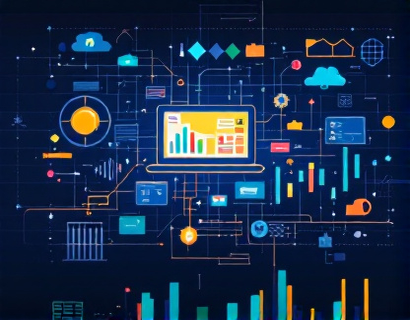Embracing the Future: AI Service Innovations for Industry Transformation
The integration of artificial intelligence into various sectors has ushered in a new era of efficiency, innovation, and growth. As industries continue to evolve, the demand for advanced AI solutions that can drive transformative change has never been greater. This article delves into the latest AI service innovations, exploring how these technologies are reshaping industries and offering unprecedented opportunities for professionals and businesses alike.
The Evolution of AI in Industry
The journey of AI from a theoretical concept to a practical tool has been marked by significant milestones. Initially confined to research labs and academic institutions, AI has now permeated every aspect of our lives, from smart homes to industrial automation. The evolution of AI technologies, particularly in machine learning and deep learning, has enabled the development of sophisticated services that can process vast amounts of data, recognize patterns, and make intelligent decisions.
These advancements have not only improved existing processes but have also opened up new possibilities for innovation. For instance, in manufacturing, AI-driven predictive maintenance can reduce downtime and optimize production lines. In healthcare, AI algorithms can assist in diagnosing diseases with higher accuracy and speed, leading to better patient outcomes. The versatility of AI makes it a powerful ally across diverse sectors, each with unique challenges and opportunities.
Key AI Service Innovations
Among the myriad of AI services available today, several stand out for their potential to revolutionize industries. These innovations are not just incremental improvements but fundamental shifts in how tasks are performed and how value is created.
1. Natural Language Processing (NLP)
NLP has advanced significantly, enabling machines to understand, interpret, and generate human language with remarkable accuracy. This technology powers chatbots, virtual assistants, and automated translation services, enhancing customer engagement and communication. In the legal sector, NLP can analyze vast documents to identify key information, streamlining research and reducing manual effort. The ability of NLP to process and generate natural language makes it an indispensable tool for businesses seeking to improve efficiency and customer experience.
2. Computer Vision
Computer vision, a subset of AI that focuses on enabling machines to interpret and understand visual data, has seen tremendous progress. Applications range from autonomous vehicles that can navigate complex environments to medical imaging tools that can detect anomalies with high precision. In retail, computer vision powers inventory management systems that can track stock levels and identify product defects, reducing errors and improving operational efficiency. The precision and reliability of computer vision make it a critical component in industries where visual data plays a pivotal role.
3. Reinforcement Learning
Reinforcement learning, a type of machine learning where agents learn to make decisions by performing actions and receiving feedback, has opened new frontiers in automation and optimization. This approach is particularly useful in complex environments where traditional programming is insufficient. In logistics, reinforcement learning can optimize delivery routes and schedules, reducing costs and improving service. In finance, it can be used to develop trading strategies that adapt to market conditions in real-time, maximizing returns and minimizing risks.
4. Explainable AI (XAI)
As AI systems become more sophisticated, the need for transparency and accountability has become paramount. Explainable AI aims to make the decision-making process of AI models understandable to humans. This is crucial in sectors like finance and healthcare, where decisions can have significant impacts on people's lives. XAI tools provide insights into how AI arrives at its conclusions, building trust and ensuring compliance with regulatory requirements. By demystifying AI, XAI fosters greater adoption and integration of AI technologies across various industries.
5. Edge AI
Edge AI refers to the deployment of AI algorithms on devices at the edge of the network, closer to where data is generated. This approach reduces latency and bandwidth usage, making real-time processing possible. In industrial settings, edge AI can enable immediate analysis of sensor data, allowing for instantaneous decision-making. In smart cities, edge AI can enhance traffic management and public safety by processing data locally, reducing the reliance on centralized servers. The proximity of edge AI to data sources enhances performance and reliability, making it a vital innovation for time-sensitive applications.
Transforming Industries with AI
The impact of AI service innovations is profound and far-reaching, transforming industries in ways that were once thought impossible. Each sector faces unique challenges, and AI provides tailored solutions to address these issues, driving efficiency, innovation, and growth.
Manufacturing
In manufacturing, AI is revolutionizing production processes through predictive maintenance, quality control, and supply chain optimization. Predictive maintenance uses AI to monitor equipment health, predicting failures before they occur. This proactive approach minimizes downtime and extends the lifespan of machinery. Quality control systems powered by computer vision can detect defects with high accuracy, ensuring that only top-quality products reach the market. Supply chain optimization leverages AI to streamline logistics, reduce costs, and improve delivery times. These advancements not only enhance operational efficiency but also contribute to sustainability by reducing waste and energy consumption.
Healthcare
The healthcare industry stands to gain immensely from AI innovations. AI-driven diagnostic tools can analyze medical images and patient data to identify diseases early and accurately. Personalized treatment plans can be developed based on AI's ability to process and interpret large datasets, leading to more effective and targeted therapies. AI-powered robotic assistants can aid in surgeries, improving precision and reducing recovery times. Telemedicine platforms enhanced by AI can provide remote consultations, making healthcare more accessible to underserved populations. The integration of AI in healthcare is not only improving patient outcomes but also optimizing resource allocation and reducing costs.
Finance
In the finance sector, AI is transforming how businesses operate by enhancing risk management, fraud detection, and customer service. AI algorithms can analyze vast amounts of financial data to identify patterns and predict market trends, enabling more informed investment decisions. Fraud detection systems powered by machine learning can identify suspicious activities in real-time, preventing financial losses. Chatbots and virtual assistants improve customer service by providing quick and personalized support, enhancing customer satisfaction. AI-driven robo-advisors offer tailored investment advice, making financial planning more accessible and affordable.
Retail
Retail is another industry where AI is making a significant impact. AI-powered recommendation systems analyze customer behavior and preferences to suggest products, increasing sales and enhancing the shopping experience. Inventory management systems use AI to predict demand and optimize stock levels, reducing overstock and understock issues. Virtual try-on technologies, enabled by computer vision, allow customers to see how products look without physically trying them on, improving convenience and reducing returns. AI-driven chatbots provide 24/7 customer support, handling queries and resolving issues efficiently. These innovations not only boost sales but also create a more engaging and personalized shopping experience.
Challenges and Considerations
While the potential of AI service innovations is vast, there are challenges and considerations that must be addressed to ensure successful implementation and adoption.
Data Quality and Availability
AI algorithms rely heavily on high-quality and relevant data. Poor data quality can lead to inaccurate results and unreliable decisions. Ensuring data accuracy, completeness, and relevance is crucial. Additionally, data privacy and security are paramount, especially in sensitive sectors like healthcare and finance. Organizations must implement robust data governance practices to protect sensitive information and comply with regulations.
Skill Gap and Talent Shortage
The rapid advancement of AI technologies has created a skill gap, with a growing demand for professionals skilled in AI and machine learning. Organizations need to invest in training and development programs to upskill their workforce. Collaborating with educational institutions and fostering a culture of continuous learning can help bridge the talent gap and ensure a steady supply of skilled professionals.
Ethical and Social Implications
The deployment of AI raises ethical and social concerns, such as bias, transparency, and job displacement. AI systems can inadvertently perpetuate biases present in training data, leading to unfair outcomes. Ensuring fairness and accountability in AI requires rigorous testing and validation. Transparency in AI decision-making processes is essential to build trust and address concerns. Organizations must also consider the social impact of AI, including job displacement, and develop strategies to mitigate negative effects, such as reskilling programs and social safety nets.
The Future of AI Services
As AI technology continues to evolve, the potential for innovation and transformation is limitless. Future AI services will likely focus on enhancing human-AI collaboration, making AI more intuitive and user-friendly, and expanding into new domains.
Human-AI Collaboration
The future of AI lies in seamless collaboration between humans and machines. AI will augment human capabilities, enabling professionals to focus on higher-value tasks while AI handles repetitive and data-intensive processes. This synergy will lead to increased productivity, creativity, and innovation. Tools that facilitate intuitive interaction, such as natural language interfaces and gesture-based controls, will become more prevalent, making AI accessible to a broader audience.
Expanding into New Domains
AI is poised to make inroads into new sectors, including education, agriculture, and environmental conservation. In education, AI can personalize learning experiences, adapting to individual student needs and learning styles. In agriculture, AI can optimize crop yields and resource usage, contributing to sustainable farming practices. In environmental conservation, AI can monitor ecosystems, predict natural disasters, and support conservation efforts. The versatility of AI ensures that its applications will continue to expand, addressing global challenges and improving quality of life.
In conclusion, AI service innovations are transforming industries by providing advanced solutions that enhance productivity, efficiency, and innovation. As organizations embrace these technologies, they must navigate the associated challenges and consider the broader implications. By doing so, they can unlock the full potential of AI and drive meaningful change in their respective sectors.










































